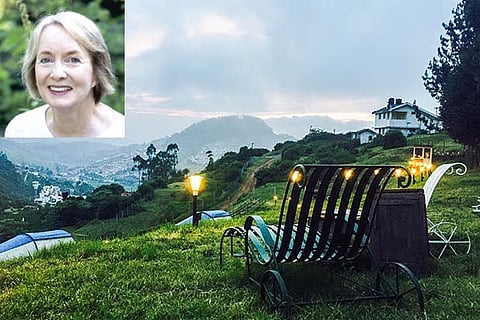

Chennai
As many people’s lives around the world have moved indoors, some fear children are losing their connection to nature. Ask most parents and grandparents and they will tell you being a child today is not what it used to be. As the world has industrialised, urbanised and our technology advanced, people’s lives have moved largely inside — a far cry from the ‘free-range’, nature-based childhoods of past decades.
That shift has repercussions not only for children’s happiness — a wealth of research shows humans respond positively to nature — but also for the way they care for the natural environment. DW spoke to Louise Chawla, a professor in the Environmental Design Program at the University of Colorado in the United States, about her research on how we can create the optimal environments for children and adolescents to grow up in healthy ways.
Difference in childhoods
Over the past two generations, both children’s and adult lives have largely moved indoors. Studies typically show that we spend some 90% of our time either in a building or in a car. And that’s very different than the free-range childhoods that a lot of grandparents remember, when the one rule governing their life was be home for dinner.
We evolved in the natural world, and this urbanisation and moving indoors is a blink of a few seconds in terms of human evolution. And we know with a great deal of research done with both adults and children that our bodies physiologically respond positively to being outdoors in safe, natural areas. And we immediately show a physiological reduction in stress. But along with that, both children and adults report feeling happier when they’re outdoors in natural areas.
Fortunately, what counts as nature is very broad. I mean, it could be the wilderness for a young child. It could also be the overgrowth of weeds in a back corner of the neighbourhood. And there are actually some very beautiful autobiographical records that I have of people remembering just kind of wading into those wild, weedy spots as children and finding them forests of wonder.
Children who express higher levels of connection to nature are also going to be more likely to say they are doing things for the natural world. So, a greater sense of connection to nature is related to greater care for nature.
Benefits for kids
Nature is full of what we call “loose parts.” You know, the dirt you can dig in, the water that you can play in and, you know, put some rocks there and change its course and see the effect of your actions. The tall grass you can build a hut in, and the sticks you drag over and so forth. So just a lot of loose parts for children to creatively decide, “Hmm, I wonder what I can do with this?” And then get busy building their den. And it’s not prescribed already by society that this leaf or this flower is for this purpose. So children can decide, “Oh, I think I’ll make a beautiful play meal,” or whatever it is. They’re really creatively using it. And it’s endless in those possibilities.
This article was provided by Deutsche Welle
Visit news.dtnext.in to explore our interactive epaper!
Download the DT Next app for more exciting features!
Click here for iOS
Click here for Android